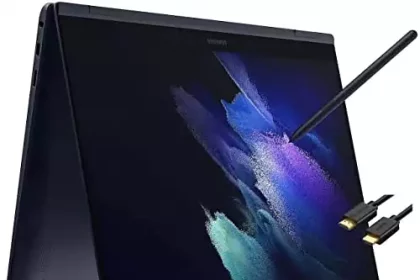There is some speculation surrounding the potential success of Apple’s recently announced Vision Pro, set to release in 2024. The apprehension lies primarily in Apple’s current strategy, which seems to steer clear of disrupting existing markets – a move that was crucial in making the iPhone a triumph. Additionally, the company’s record of lackluster partnerships could potentially hinder the Vision Pro’s success, given that a network of focused partners will be key.
Still, the announcement of this head-mounted display gives it a definite reality. The potential of massive revenue generation exists for companies, including Apple, that successfully tap into this innovative and disruptive way of interacting with technology.
The Vision Pro’s hardware is undoubtedly impressive, but concerns surface when considering Apple’s current marketing approach. This opens the door to competition in a way that was not experienced during the iPod or iPhone era.
Let’s delve into the specifics of the Apple Vision Pro, and then wrap up with a mention of the TicWatch Pro 5, a smartwatch that rivals the Apple Watch in terms of features.
The design of the Apple Vision Pro cannot be faulted. But, good design alone doesn’t guarantee success. If that were the case, the French Citroen would be the leading car brand worldwide, rather than being mainly recognized in France alone.
The Vision Pro is arguably one of the most uncompromising head-mounted computer systems to date. Although it’s furnished with new hardware and software and lacks a robust ecosystem, similar was the situation with the iPhone and especially the iPod during their initial phase, both of which turned out to be significantly successful.
The Vision Pro’s high resolution and superior ergonomics make other AR and VR products seem outdated. While the $3,499 price tag may seem steep, it’s often more beneficial to initially launch a high-quality, exclusive product. This strategy is in contrast to Facebook and Microsoft’s approach of releasing subpar quality products at attractive price points around $500.
A high initial standard (and price) that focuses on a few experiences can lay the foundation for a market success similar to that of the iPhone or iPod. Tesla is a perfect example of this, with its cars initially being exclusive and expensive, but with exceptional performance and utility.
The Vision Pro offers some nice utilities and is not tied to the metaverse, which is a positive point considering the mixed success of metaverse initiatives. The external battery pack not only reduces the weight of the Vision Pro device on your head but also allows for an easy upgrade to a larger battery pack or a plug-in option for plane trips.
However, there are reasons to believe that Apple’s business practices might affect the product’s success.
Apple’s strategic errors, such as limiting the Apple Watch’s compatibility to only iOS, thus reducing its total available market (TAM), and the iPad’s inability to cannibalize the Mac, reflect a revenue-centric strategy rather than a customer-centric one. Also, Apple’s approach towards partnerships and interoperability could hinder the development of a robust ecosystem for the Vision Pro.
Moreover, Apple’s marketing prowess seems to have waned since Steve Jobs’ departure. Convincing people to embrace a new computing platform requires a strong demand generation marketing campaign, something we haven’t seen from Apple on a large scale in recent years. Without such marketing efforts, the Vision Pro, despite its high quality, might underperform.
In conclusion, the Vision Pro has the potential to be a market success given its design and features. However, success will require Apple to revisit its earlier strategies, invest adequately in demand generation, be open to cannibalizing existing products, improve its partnership approach, and ensure better interoperability with third-party content providers.
If Apple fails to take these necessary steps with Vision Pro, it might create a market that a competitor, like Samsung or Lenovo, could dominate, much like how Apple took the smartphone market from Microsoft, Nokia, Palm, and Research in Motion (BlackBerry). The question remains whether Tim Cook’s Apple, with its emphasis on margins over product success, can replicate the success achieved during Steve Jobs’ era.





